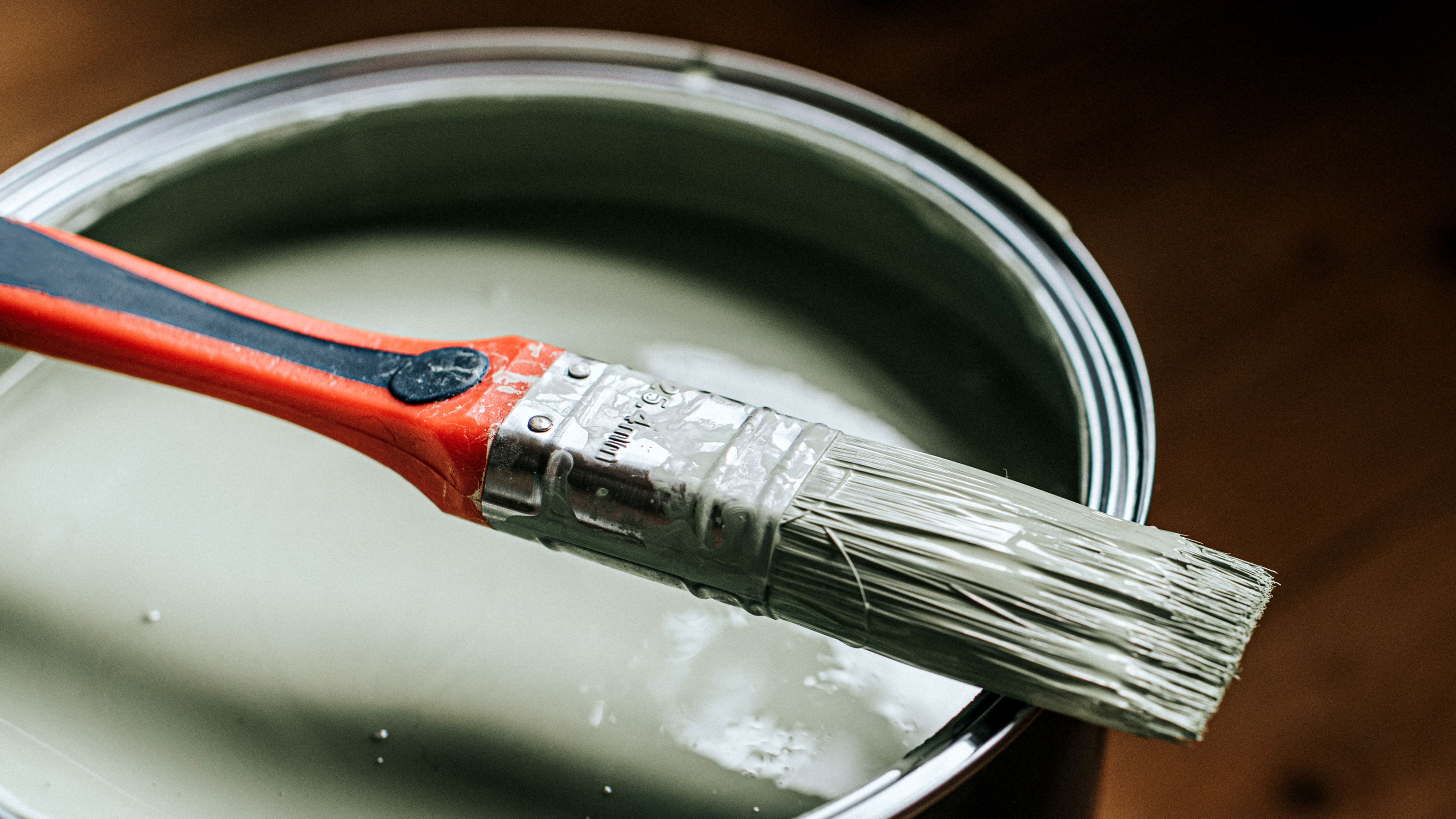What is eggshell paint? All you need to know about this common paint type
Gloss and matt are popular choices, but what is eggshell paint? Here we reveal the differences, what it's commonly used for and its pros and cons

What is eggshell paint and what can it bring to your next paint project are common questions for DIY decorators. Eggshell could be the perfect choice for your home. Why? It differs from matt and gloss, sitting somewhere in between the two, and brings with it a subtle finish that is more akin to satin.
Whether you are painting a wall, adding the finishing touches to skirting boards, architrave or door or window frames, eggshell is always an option. Here we take a closer look at where it is commonly used, the benefits of using it and the differences between other popular types of paint.
What is eggshell paint? In a nutshell
Eggshell is a type of paint that has a low sheen that gets its name from the fact that it looks like the surface of an eggshell. In the hierarchy of paint finishes it sits somewhere between a matt and silk finish and has a low reflection surface when dry.
What is eggshell paint commonly used for?
Eggshell is commonly an interior paint that is used in medium and low traffic areas such as bedrooms, living rooms and kitchens.
It is available as an emulsion for walls or as a paint for painting windows and other woodwork such as door frames, architrave and trim that doesn’t see too much traffic. Outside of these interior areas it is often used for painting furniture.
Its low sheen means that it is less reflective and makes it a good choice for older homes that might have a few more surface imperfections than a newer home.
What are the benefits of using eggshell paint?
As a versatile low sheen paint, eggshell is great for areas that have surface imperfections such as walls and woodwork. Its non-reflective surface means that when light shines on the surface it is harder to see any defects.
Its versatility means you can get the same level of sheen across a room for a uniform finish. Plus, in older homes its subtle sheen presents a heritage feel that adds a touch of elegance that may match the decor style.
Eggshell is also a good choice for painting novices as it's easy to apply and provides a good finish with a brush or roller. And, its low level sheen does make it resistant to dirt and while not as easy to clean as satin or gloss it still provides a decent level of wipeability. (Check out our how to clean painted walls guide to keep them dirt-free.)
What are the negatives of using eggshell paint?
There are a couple of downsides to using eggshell, including:
- The obvious is that you won’t get a high sheen finish, but if you are looking for a higher sheen finish it's very much a toss up of satin vs gloss.
- The low level sheen of eggshell means that you need to be more subtle when cleaning so you don’t remove the sheen and create a mismatch with the rest of the paint.
- Eggshell is typically slightly more expensive than its counterparts, but the prices vary depending on brand and type of paint you are using.
What’s the difference between eggshell and matt paint?
Eggshell and matt paint are close on the sheen scale, but eggshell has a slightly higher sheen than matt. They are similar in appearance with eggshell giving a subtle slightly shinier finish making it easier to clean and typically more durable — meaning it won't need to be painted so often.
What is the difference between eggshell and satinwood?
The main difference between the two paints is the finish. When comparing eggshell vs satin the difference lies in the sheen. Satin is slightly shinier than eggshell and more durable, making it a popular choice for woodwork in most homes.
It is also easier to clean making it a good choice for high traffic areas, whereas eggshell is a better choice for areas that see less traffic, such as bedrooms.
Get the Homebuilding & Renovating Newsletter
Bring your dream home to life with expert advice, how to guides and design inspiration. Sign up for our newsletter and get two free tickets to a Homebuilding & Renovating Show near you.
Steve Jenkins is a freelance content creator with over two decades of experience working in digital and print and was previously the DIY content editor for Homebuilding & Renovating.
He is a keen DIYer with over 20 years of experience in transforming and renovating the many homes he has lived in. He specialises in painting and decorating, but has a wide range of skills gleaned from working in the building trade for around 10 years and spending time at night school learning how to plaster and plumb.
He has fitted kitchens, tiled bathrooms and kitchens, laid many floors, built partition walls, plastered walls, plumbed in bathrooms, worked on loft conversions and much more. And when he's not sure how to tackle a DIY project he has a wide network of friends – including plumbers, gas engineers, tilers, carpenters, painters and decorators, electricians and builders – in the trade to call upon.

